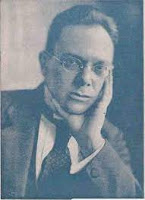I’ve managed to avoid doing a “favorite recordings” list for the past couple of years, but our persuasive editor, KN, convinced me that I should do so this time around. You know what? It turned out to be fun to look back through 2023 reviews on Classical Candor, not just my own but those of my colleagues, KN and RR, as well. (But JJP, when will we be treated to another review from you? It’s been too long!)
Before proceeding, though, I should clarify how my “favorites” made the list. These are not to be considered somehow “the best” of the year; instead, they are simply a few recordings that I found both interesting and well done, ones that I found myself returning to long after their reviews appeared in Classical Candor. Nor does the ordering of the list reflect some sort of “quality” ranking; it’s simply in chronological order by review date.
Albeniz: Iberia. Nelson Goerner. Alpha Classics 829. Iberia is one of those works in which one can be lost, moving through a kaleidoscopic world of themes and emotions. Goerner is by turns playful and serious, light and dark, swift and slow, somber and feverish, reflecting the music’s moods in a performance that rewards repeated hearings. Alpha’s outstanding sound compliments and completes the picture. By the way, technically this recording is a 2022 release, but I didn’t get around to publishing a review until January of this year, so it makes the list anyway.
Arnold: Concerto No. 1 for Clarinet and Strings Op. 20; etc. Chandos CHAN 20152. This disk of multiple works by Malcolm Arnold (I named only the Clarinet Concerto in the headline above) was reviewed by our colleague, Ryan Ross, but I’m including it here because it meets the criteria of interest and excellence. Frankly, I was only vaguely familiar with the music of Malcolm Arnold; this disk was an excellent introduction to a composer that I need to, and am getting to, know better. If you, too, are unfamiliar with Arnold’s work, read Ryan’s review of this disk here and go find a copy.
Beethoven: A Beethoven Odyssey: Volume 7 (Piano Sonatas Nos. 30, 31, and 32). James Brawn, piano. MSR Classics MS 1471. I reviewed both volumes 7 and 8 of Brawn’s A Beethoven Odyssey series this year, but I should call your attention to the entire series; volume 1 – 8 are currently available and the release of the final volume, number 9, is coming up in 2024. Our colleague John Puccio reviewed several of the earlier volumes in the series, and he and I are of one mind in finding Brawn’s playing consistently so “right”, so “of course that’s the way it should be”. That the MSR engineers capture the sound of the Steinway so well is the proverbial icing on the cake.
Brahms: Double Concerto, Op 192; Viotti: Violin Concerto No. 22; Dvorak: Silent Woods, Op.68/5. Christian Tetzlaff (violin), Tanja Tetzlaff (cello), Paavo Järvi/Symphonie-Orchester Berlin. Ondine ODE 1423-2. An extraordinarily touching memorial to a lost friend, the late pianist Lars Vogt. But don’t let the “in memoriam” aspect lower your expectations: the performance of the Brahms Double Concerto is a fine one, passionate but technically sound, while the Viotti Concerto is, if not music of the first rank, well worth hearing. And if the short Dvorak piece from Silent Woods doesn’t provoke a lump in your throat, you may need an emotion transplant.
Hyperion catalog on streaming services. No, this is not an individual recording. But for those of us who rely heavily on streaming, the availability of the Hyperion catalog on major streaming services is a cause for celebration. Note that Hyperion started releasing their existing catalog for streaming in batches starting in September; if your favorite title is not yet available, it will be soon. 2023 was a good year!
There we are. I didn’t set out to confine myself to composers whose names started with one of the first two letters of the alphabet, so I’ll try for more variety in 2024. Meanwhile, I hope that your listening is full of highlights every day.















































